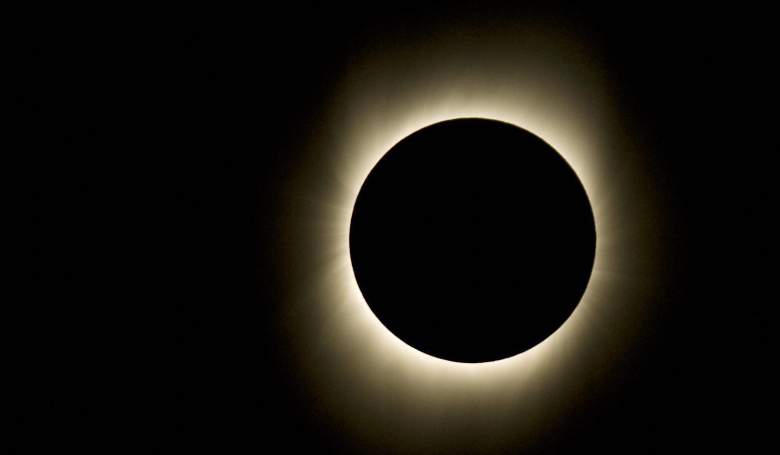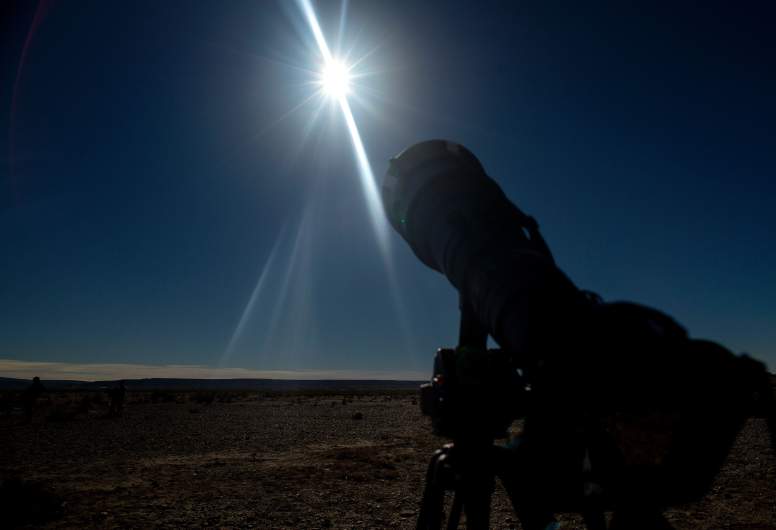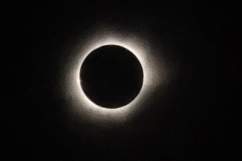
Getty The sun is covered by the moon during a total solar eclipse in the Indian city of Varanasi on July 22, 2009.
The Great American Solar Eclipse of 2017 is here. Most retailers are out of solar eclipse glasses, and it’s probably too late to get them online, where you have to watch out for fakes anyway.
That has some people turning to their own drawers at home. A lot of people are wondering: Can you safely wear welding glasses or a welding helmet to watch the solar eclipse?
Most could be very dangerous to your eyes. If you are considering using them, you need to make sure you are following NASA’s safety precautions.
This is what NASA says about using welding glasses or helmets to watch the eclipse on its safety website:
Experts suggests that one widely available filter for safe solar viewing is welders glass of sufficiently high number. The only ones that are safe for direct viewing of the Sun with your eyes are those of Shade 12 or higher. These are much darker than the filters used for most kinds of welding. If you have an old welder’s helmet around the house and are thinking of using it to view the Sun, make sure you know the filter’s shade number. If it’s less than 12 (and it probably is), don’t even think about using it to look at the Sun. Many people find the Sun too bright even in a Shade 12 filter, and some find the Sun too dim in a Shade 14 filter — but Shade 13 filters are uncommon and can be hard to find.
According to 11Alive, an Atlanta television station, “Most welding glasses are not strong enough to keep your eyes safe, if you are watching the eclipse with them.”
The televisions station reported, “NASA recommends only using the darkest shades, 12 or higher, to view the eclipse. All the hardware stores we talked to were sold out of shades as low as shade 4.”
The American Astronomical Society lists eye safety tips and never mentions welding glasses as a way to protect your eyes. Your eyes are an extremely precious commodity. Why take a risk?
NASA reports that you can incur serious retinal damage to your eyes if you look directly at the sun during a solar eclipse.
NASA stresses that safety should be paramount. “The only safe way to look directly at the uneclipsed or partially eclipsed sun is through special-purpose solar filters, such as ‘eclipse glasses’or hand-held solar viewers. Homemade filters or ordinary sunglasses, even very dark ones, are not safe for looking at the sun; they transmit thousands of times too much sunlight,” the space agency reports.

Getty
It’s just as dangerous to look at the eclipse through binoculars, a telescope, or camera without a proper solar eclipse filter. It’s very dangerous to wear regular sunglasses too.
What else can you do? There are DIY alternatives. NASA suggests the alternative method of the pinhole projection. “An alternative method for safe viewing of the partially eclipsed sun is pinhole projection (link is external). For example, cross the outstretched, slightly open fingers of one hand over the outstretched, slightly open fingers of the other, creating a waffle pattern. With your back to the sun, look at your hands’ shadow on the ground,” the NASA safety website says.
“The little spaces between your fingers will project a grid of small images on the ground, showing the sun as a crescent during the partial phases of the eclipse. Or just look at the shadow of a leafy tree during the partial eclipse; you’ll see the ground dappled with crescent Suns projected by the tiny spaces between the leaves.”
Here are instructions for how to make a more elaborate solar eclipse viewing box (you don’t look directly at the sun with it), using a shoebox or cereal box:
